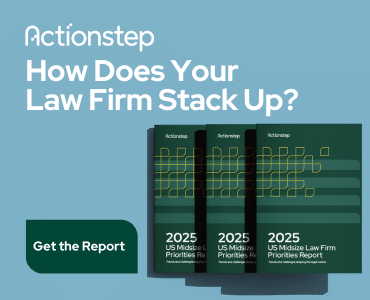Talent retention strategy: What’s going on? Are there best practices for how a law firm can retain its best and brightest employees?
Question: Turnover is a constant problem at our firm. Professional staff, paralegals—even associates—leave for neighboring firms, no matter how much money is thrown at them to stay. The latest was the head of IT. The partners are frustrated, and nobody’s getting much support. What’s going on? Are there best practices for how a law firm can retain its best and brightest employees?

We must focus on flexibility, transparency, and engagement. There is no benefit, program, or process that fits all. We need benefits that grow with people and their families over time; we need policies allowing flexibility to meet work-life demands that may be applied differently between firm members and for a single member across their tenure. The idea that “fairness” requires that a rule be applied to all, in the same manner, is passé and counterproductive. Decisions and the reasons for them must be transparent.
Ultimately, it is about engagement—about creating an environment where people are exposed to interesting work and are valued for their contributions. A place where people feel needed and are allowed to contribute to something they perceive as important. It is not about implementing the newest and best program. It is about relationships and culture-making.
Cheryl Coutchie has been the Director of Human Resources for Warner Norcross & Judd LLP for the past 19 years. WN&J has been repeatedly recognized as a 101 Best and Brightest Employer, a Crain’s Cool Place to Work, a Detroit Free Press Top Workplace and with Sloan Awards for Business Excellence in Workplace Flexibility. Turnover in 2012 was 3.8 percent.

The managing partner asks the firm administrator to do an exit interview. They learn that she felt there was no professional development at the firm. Partners brought in the business and the associates worked for the partners. She had been there for three years and never felt that anyone truly took a vested interest in her career.
What should the managing partner and firm administrator do? With whom do they share this information? The head of the real estate department is a high producer but has not done much to develop her staff. She is not unkind; she is indifferent. To her, work is work. And she is really good at what she does.
It’s a frustrating situation—and a common one. Here are ideas to consider concerning what makes people stay.
- People want to be a part of something bigger than themselves.
- They want to hear, on a regular basis, what is expected of them and if they are meeting your expectations. This means more than once a year.
- People leave supervisors and managers more often than they leave a firm. Additionally, they leave to follow a colleague.
- Leadership matters. People want to see the leaders involved, and not just at the annual meeting.
- Recognize. Reward. Appreciate. And do it again.
- Sink or swim is not a strategy. Go to the pool with them.
- Tools, time, and training—let them know what it costs and how you are investing in them.
- All things being equal, always, always promote from within.
- If you say you have an open-door policy, have one. Unequivocally.
- When possible, find opportunities outside the core work product.
Maureen Kolb is the Founder of Cr8ive Energies, LLC. She is the author of the new book Stop Telling, Start Asking: How to Develop the People Around You by Asking the Right Questions.

Here are a few more tips to help you reduce turnover.
- Create a good orientation program. Make sure new employees get proper training to be successful in their positions. Not investing the time in training is a sure way to lose good employees. Orientation is also a good way to get your high performers involved and invested in your firm by helping and training others.
- Pay a fair salary. And pay for performance, not longevity. There are plenty of free or inexpensive annual surveys available to review salary data. Once you determine a range for your salaries, make sure to recognize your high performers whenever possible.
- Look beyond the “squeaky wheel.” Too often, we spend more time trying to “fix” poor employees instead of focusing on high performers. High performers not only want to do a good job and want to be told they’re doing a good job, but they are also looking to be challenged. The best thing to do is ask what their goals are, both short- and long-term, and whenever possible help them reach those goals. This will create the loyalty we all want from our high performers.
- Give employees what they need to do their jobs well. This means investing in your technology. It means give good instructions. It means give employees enough time to complete a task. All of these things will set your people up for success. Failing to do these things will set them up for failure.
- Get employees involved in your work. One of the greatest challenges with higher staff-to-attorney ratios is that there is less time for staff to get involved in cases. Taking the extra time to explain the long-term goals of a case or task will help create a sense of team, which most high performers crave.
- Promote your high performers, not just your long-term employees. This goes back to hiring the right person for a position, despite the political issues it may cause with your long-term employees.
- Know what role “the job” plays. In a nutshell, Maslow’s hierarchy of needs suggests that at a basic level, people have a need for food, shelter and clothing. If you find out the job you are providing doesn’t also meet the need to belong and the need for personal growth, you will have a lot of turnaround.
- Be honest. We all have room for improvement, and if you provide honest and specific feedback, high performers will respond positively. They need and want feedback and will continuously try to grow and to improve.
Finally, remember to say “thank you.” It seems like such a simple thing, but in the fast-paced law firm environment, saying “please” and “thank you” is often overlooked. Administrative Professionals Week (April 21-27) is a great opportunity to recognize your employees for a job well done—and you don’t have to spend a lot of money to do so. High performers will go the extra mile for you when you show you need them.
Isabel Warner is the HR Manager for TroyGould PC, a mid-sized Los Angeles law firm. Isabel has worked in legal human resources for over 12 years.
Illustration ©iStockPhoto.com
















